Biggest Museums in the World – Our Top 10 Picks
The world of art is enriched by the grandeur and diversity showcased in some of the largest museums across the globe. These cultural behemoths not only house priceless treasures but also serve as bastions of history, creativity, and human expression. From iconic institutions like the Louvre in Paris to the Metropolitan Museum of Art in New York City, these museums offer a journey through centuries of artistic evolution, from ancient civilizations to contemporary masterpieces. Join us as we explore the biggest museums in the world, each a testament to the enduring power and beauty of artistic endeavor.
Table of Contents
- 1 The Relevance of Art Museums
- 2 The Top 10 Biggest Art Museums in the World
- 2.1 National Museum of China – Beijing, China
- 2.2 Metropolitan Museum of Art – New York City, United States
- 2.3 British Museum – London, United Kingdom
- 2.4 Louvre Museum – Paris, France
- 2.5 State Hermitage Museum – St. Petersburg, Russia
- 2.6 Museo Nacional del Prado – Madrid, Spain
- 2.7 National Gallery – London, United Kingdom
- 2.8 Tokyo National Museum – Tokyo, Japan
- 2.9 Vatican Museums – Vatican City
- 2.10 Museum of Modern Art – New York City, United States
- 3 Frequently Asked Questions
The Relevance of Art Museums
Art museums hold immense relevance in today’s world, serving as vital cultural institutions that bridge the past, present, and future of artistic expression. These museums act as custodians of our collective heritage, preserving and showcasing artworks that reflect the rich tapestry of human history, beliefs, and creativity. Beyond mere repositories of art, they also function as spaces for contemplation, dialogue, and learning, offering visitors opportunities to engage with diverse perspectives and ideas.

Moreover, art museums play a crucial role in shaping cultural narratives and fostering social cohesion. By curating exhibitions that highlight marginalized voices, untold stories, and contemporary issues, they contribute to critical discussions about identity, politics, and social justice. Through educational programs, outreach initiatives, and digital platforms, museums strive to make art accessible and inclusive.
This has the result of fostering a deeper understanding and appreciation for the transformative power of artistic expression in our lives.
The Top 10 Biggest Art Museums in the World
Discover the grandeur and cultural richness of the world’s largest art museums, where history, creativity, and human expression converge on a monumental scale. These renowned institutions stand as beacons of artistic heritage, housing vast collections of masterpieces from across the globe. From the iconic halls of the Louvre in Paris to the sprawling galleries of the Metropolitan Museum of Art in New York City, each museum offers a captivating journey through centuries of artistic evolution. Prepare to immerse yourself in a world of artistic wonders as we explore the monumental size, diverse collections, and captivating stories behind the biggest art museums in the world.

National Museum of China – Beijing, China
| Location | Beijing, China |
| Collection Size | Over 1 million items |
| Exhibition Space | Around 192,000 square meters |
The National Museum of China houses an impressive collection of over 1 million items, spanning China’s rich cultural heritage. Its exhibition space of approximately 192,000 square meters makes it one of the world’s largest museums.
What sets this museum apart is its comprehensive coverage of Chinese art, history, and culture, offering visitors a deep dive into the country’s millennia-old civilization.
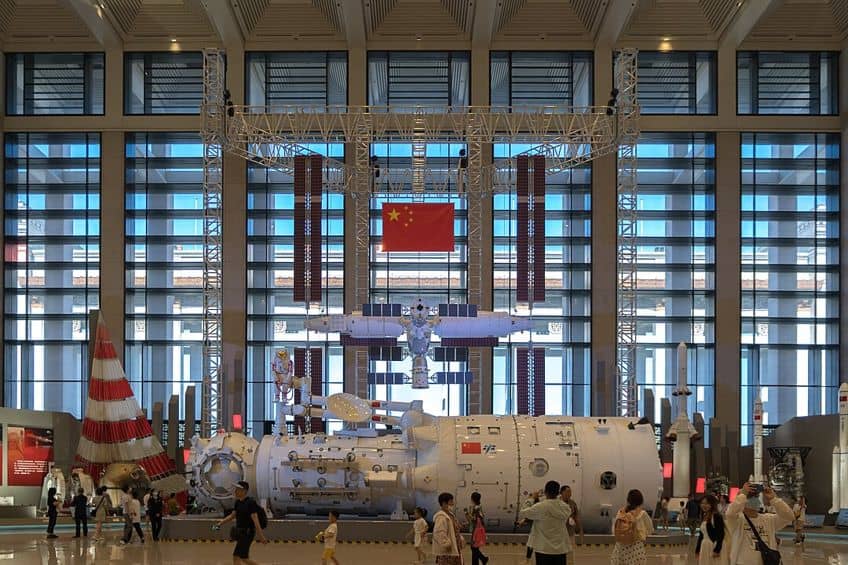
Metropolitan Museum of Art – New York City, United States
| Location | New York City, United States |
| Collection Size | Over 2 million works |
| Exhibition Space | Around 190,000 square meters |
With a collection exceeding 2 million works, the Metropolitan Museum of Art is a treasure trove of artistic masterpieces from around the globe. Its vast exhibition space of approximately 190,000 square meters allows for immersive experiences across various artistic periods and styles.
What makes the Met remarkable is its ability to showcase not just traditional art but also contemporary pieces, making it a dynamic hub of artistic innovation.
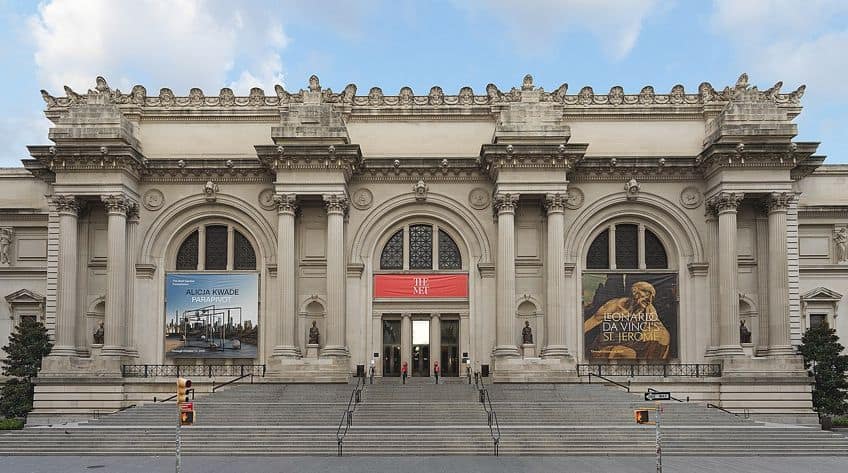
British Museum – London, United Kingdom
| Location | London, United Kingdom |
| Collection Size | Over 8 million objects |
| Exhibition Space | Around 92,000 square meters |
The British Museum boasts an extensive collection of over 8 million objects, ranging from ancient artifacts to modern artworks. Its exhibition space of about 92,000 square meters provides a comprehensive journey through human history and culture.
What sets this museum apart is its commitment to showcasing diverse perspectives and fostering global dialogue through its diverse collections and exhibitions.
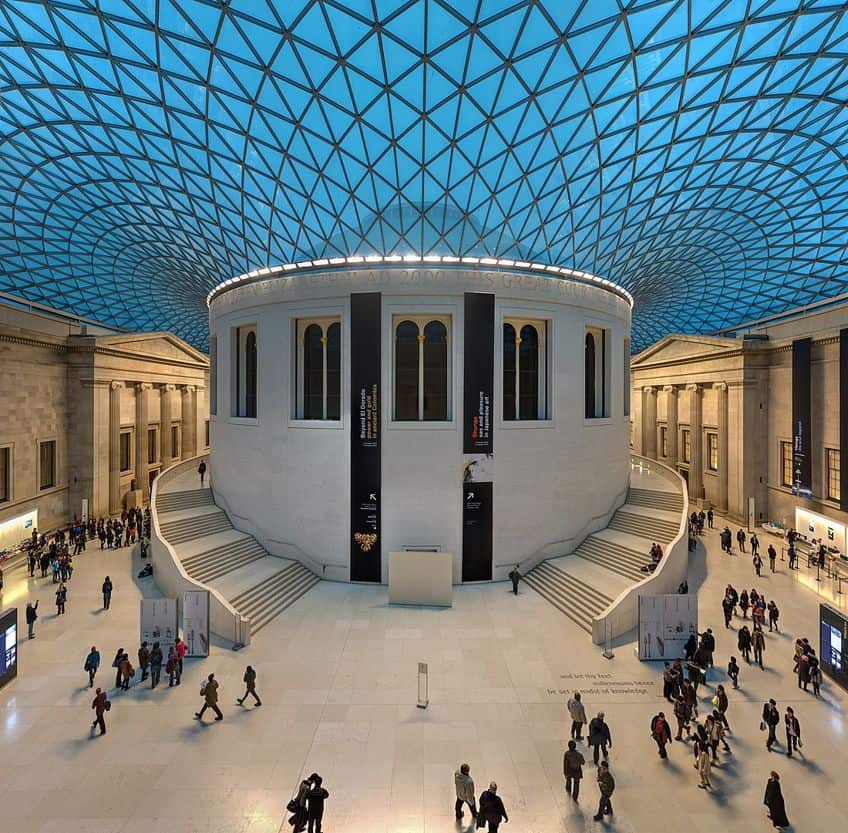
Louvre Museum – Paris, France
| Location | Paris, France |
| Collection Size | Approximately 380,000 objects |
| Exhibition Space | Around 72,735 square meters |
The Louvre Museum is home to a staggering collection of approximately 380,000 objects, including iconic works like the Mona Lisa and the Venus de Milo. Its exhibition space spans about 72,735 square meters, offering visitors an immersive experience in the history of art and civilization.
What makes the Louvre remarkable is its status as not just a museum but also a historic monument, symbolizing the enduring legacy of artistic and cultural heritage.

State Hermitage Museum – St. Petersburg, Russia
| Location | St. Petersburg, Russia |
| Collection Size | Over 3 million items |
| Exhibition Space | Around 66,842 square meters |
The State Hermitage Museum houses over 3 million items, making it one of the world’s largest and most diverse collections. Its exhibition space of around 66,842 square meters encompasses a vast range of art, from ancient civilizations to modern masterpieces.
What sets the Hermitage apart is its magnificent architecture, including the Winter Palace, and its rich cultural legacy as a symbol of Russia’s artistic and historical richness.

Museo Nacional del Prado – Madrid, Spain
| Location | Madrid, Spain |
| Collection Size | Approximately 17,500 works |
| Exhibition Space | Around 58,000 square meters |
The Museo Nacional del Prado is renowned for its collection of over 8,000 paintings, 6,000 drawings, 2,500 prints, and 1,000 sculptures, showcasing the depth of Spanish art history. Its exhibition space of about 58,000 square meters allows for a comprehensive exploration of European art, with highlights including works by Velázquez, Goya, and El Greco.
What makes the Prado remarkable is its focus on classical art, offering visitors a journey through centuries of artistic excellence.

National Gallery – London, United Kingdom
| Location | London, United Kingdom |
| Collection Size | Over 2,300 paintings |
| Exhibition Space | Around 46,396 square meters |
The National Gallery in London houses a collection of over 2,300 paintings, including masterpieces by Van Gogh, Leonardo da Vinci, and Rembrandt. Its exhibition space of around 46,396 square meters provides a rich panorama of Western European art history.
What sets the National Gallery apart is its dedication to showcasing iconic works alongside lesser-known gems, offering a nuanced perspective on the evolution of art.
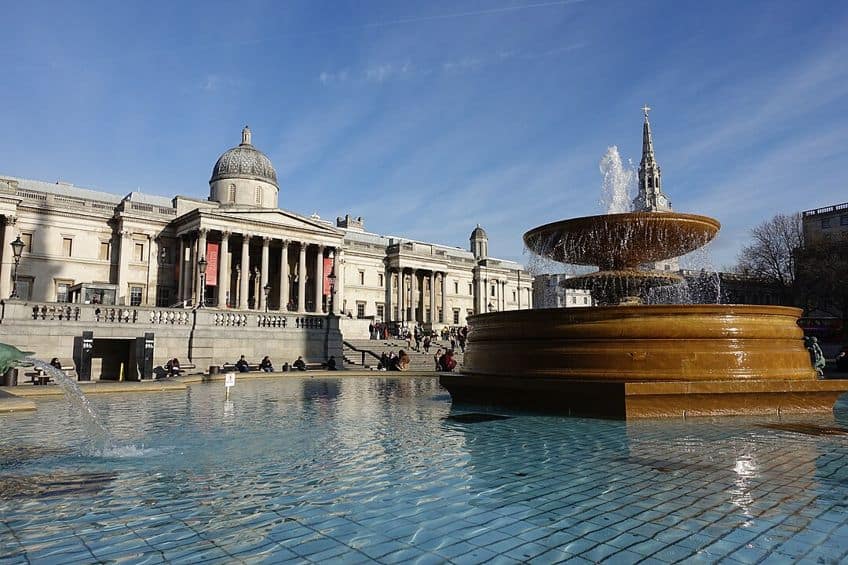
Tokyo National Museum – Tokyo, Japan
| Location | Tokyo, Japan |
| Collection Size | Over 110,000 items |
| Exhibition Space | Around 45,000 square meters |
The Tokyo National Museum boasts a collection of over 110,000 items, including Japanese art, archaeological artifacts, and Asian treasures. Its exhibition space of about 45,000 square meters allows for a comprehensive exploration of Japan’s cultural heritage.
What makes this museum remarkable is its focus on traditional Japanese art forms like ceramics, textiles, and woodblock prints, offering insights into the country’s artistic traditions.
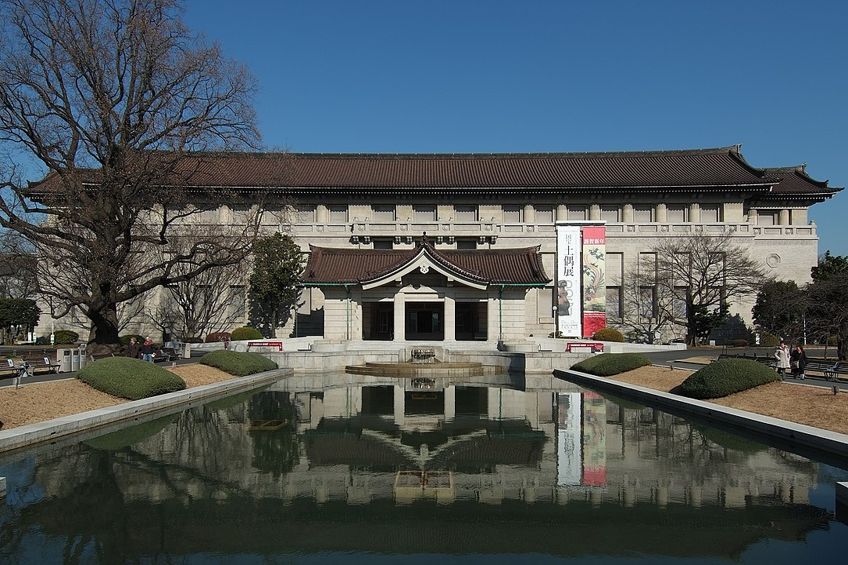
Vatican Museums – Vatican City
| Location | Vatican City |
| Collection Size | Approximately 70,000 pieces |
| Exhibition Space | Around 43,000 square meters |
The Vatican Museums house approximately 70,000 pieces, including renowned works such as Michelangelo’s Sistine Chapel ceiling and Raphael’s Stanze di Raffaello. Its exhibition space of around 43,000 square meters showcases the Vatican’s immense artistic wealth, spanning from classical sculptures to Renaissance masterpieces.
What makes the Vatican Museums remarkable is their unique blend of religious and secular art, reflecting centuries of artistic patronage by the Catholic Church.
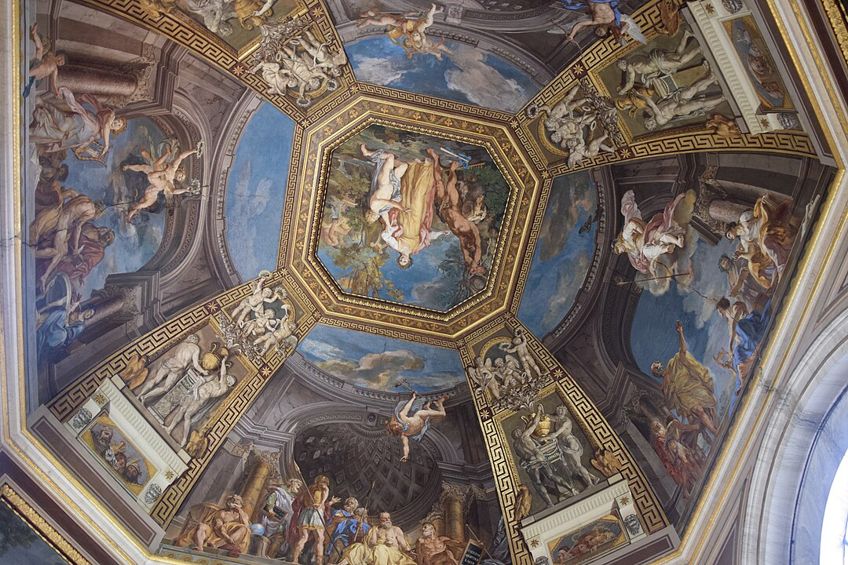
Museum of Modern Art – New York City, United States
| Location | New York City, United States |
| Collection Size | Over 200,000 artworks |
| Exhibition Space | Around 19,000 square meters |
The Museum of Modern Art (MoMA) in New York City boasts a collection of over 200,000 artworks, including paintings, sculptures, photographs, and design objects. Its exhibition space of approximately 19,000 square meters is dedicated to showcasing modern and contemporary art from around the world. What makes MoMA remarkable is its role in shaping modern art discourse, with iconic works by artists like Picasso, Warhol, and Kahlo, making it a hub of artistic innovation and exploration.

As we conclude our exploration of the largest museums on the planet, we are reminded of the invaluable role these institutions play in preserving, celebrating, and sharing humanity’s artistic heritage. From the majestic halls of the Hermitage in St. Petersburg to the innovative galleries of the National Museum of China, each museum holds within its walls a wealth of cultural treasures that inspire and educate visitors from around the world. Through their collections, exhibitions, and educational programs, these museums continue to be pillars of cultural exchange, fostering a deeper appreciation for the diversity and beauty of global artistry.
Frequently Asked Questions
What Qualifies a Museum as One of the Biggest in the World?
A museum’s size can be determined by various factors, including the number of artworks or artifacts it houses, the total exhibition space available for public viewing, and its overall collection size.
What Are Some of the Largest Art Museums Globally Based on Exhibition Space?
Some of the largest art museums in the world based on exhibition space include the Louvre Museum in Paris, the Metropolitan Museum of Art in New York City, and the National Museum of China in Beijing.
How Do These Large Museums Manage Their Vast Collections?
Large museums employ curatorial teams, conservation experts, and archival staff to manage and maintain their extensive collections. They often use digital cataloging systems and conservation techniques to preserve artworks and artifacts.
What Are Some Iconic Artworks or Artifacts Housed in These Big Museums?
These big museums are home to iconic artworks and artifacts such as the Mona Lisa at the Louvre Museum, the Egyptian mummies at the Metropolitan Museum of Art, and the Terracotta Warriors at the National Museum of China, among others.
Isabella studied at the University of Cape Town in South Africa and graduated with a Bachelor of Arts majoring in English Literature & Language and Psychology. Throughout her undergraduate years, she took Art History as an additional subject and absolutely loved it. Building on from her art history knowledge that began in high school, art has always been a particular area of fascination for her. From learning about artworks previously unknown to her, or sharpening her existing understanding of specific works, the ability to continue learning within this interesting sphere excites her greatly.
Her focal points of interest in art history encompass profiling specific artists and art movements, as it is these areas where she is able to really dig deep into the rich narrative of the art world. Additionally, she particularly enjoys exploring the different artistic styles of the 20th century, as well as the important impact that female artists have had on the development of art history.
Learn more about Isabella Meyer and the Art in Context Team.
Cite this Article
Isabella, Meyer, “Biggest Museums in the World – Our Top 10 Picks.” Art in Context. April 11, 2024. URL: https://artincontext.org/biggest-museums-in-the-world/
Meyer, I. (2024, 11 April). Biggest Museums in the World – Our Top 10 Picks. Art in Context. https://artincontext.org/biggest-museums-in-the-world/
Meyer, Isabella. “Biggest Museums in the World – Our Top 10 Picks.” Art in Context, April 11, 2024. https://artincontext.org/biggest-museums-in-the-world/.










